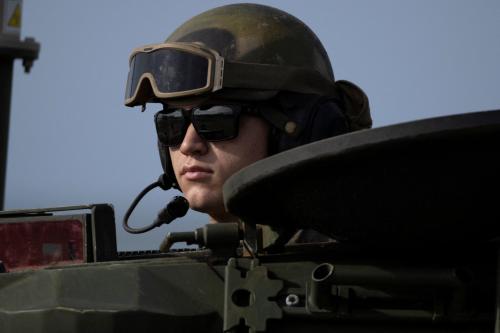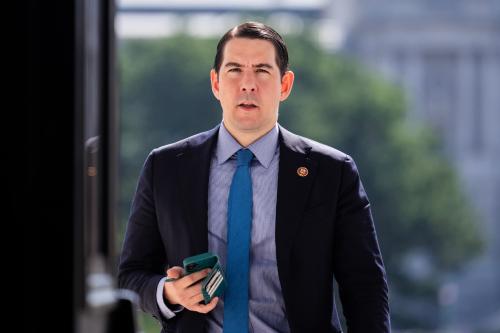

Past Event
8:00 am - 5:00 pm EDT
1775 Massachusetts Avenue NW
Washington, DC
20036
The Brookings Institution, in collaboration with the International Communications and Negotiation Simulation (ICONS) Project of the University of Maryland, held a two-day simulation exercise on October 13-14, 2009, aimed at illuminating issues related to reactions by the United States and China to an imaginary crisis created by actions of a new Taiwan government. This exercise is a companion event to a simulation held in May 2009.
The participants in the October simulation, leading foreign policy and national security experts, were divided into two teams representing China and the United States; a control team played the role of Taiwan and other supporting actors. The objective of the simulation was to identify patterns of behavior of the two sides in a crisis as an aid to improving mutual understanding and developing approaches to preventing crises and resolving contentious issues in the future.
The scenario centered on an escalating set of moves in 2012 by a new Taiwan president that threatened the political status quo among the three principal actors in the region—China, Taiwan, and the United States. The challenge began when, shortly after his election, the new president announced an “advisory referendum,” asking the opinion of voters on creation of a convention to draft a new constitution, and specifying the charter’s principles. During the campaign, the president had made clear that a new constitution would claim that Taiwan is an independent sovereign state, and not a part of the People’s Republic of China. Even before the inauguration, China had reacted strongly to hints of a constitutional change, condemning the new president’s proposals and pressuring the United States to convince him to cancel the referendum. U.S. attempts to mollify both sides were rebuffed, however, and the Taiwan president continued through the three rounds of this exercise of the simulation to pursue a high-stakes policy of increasingly provocative moves.
Throughout the simulation, the participant teams combined diplomatic and military moves in an effort to promote their national goals while avoiding direct confrontation. Among the key actions taken were:
Some of the significant insights that emerged from the simulation included the following:
Overall, the simulation revealed a propensity on the part of China to view any hint of moves toward independence on Taiwan as a threat to its core identity and to respond forcefully, including assertive and deliberate use of military forces. For its part, the United States was torn between its ideological support of democracy and self-determination, and its need to maintain a balanced relationship with China, in view of that country’s importance as a trading partner, a major holder of U.S. debt, and a burgeoning military power.
Some concrete recommendations emerge from the simulation:
8:00 am - 5:00 pm
The Brookings Institution, in collaboration with the ICONS Project of the University of Maryland, held a simulation exercise aimed at illuminating issues related to reactions by the United States and China to an imaginary crisis in East Asia. This exercise is a companion event to a simulation held in May 2009.





Michael E. O’Hanlon
September 29, 2025

Elaine Kamarck
September 25, 2025

Raymond La Raja, Alex Theodoridis
September 24, 2025